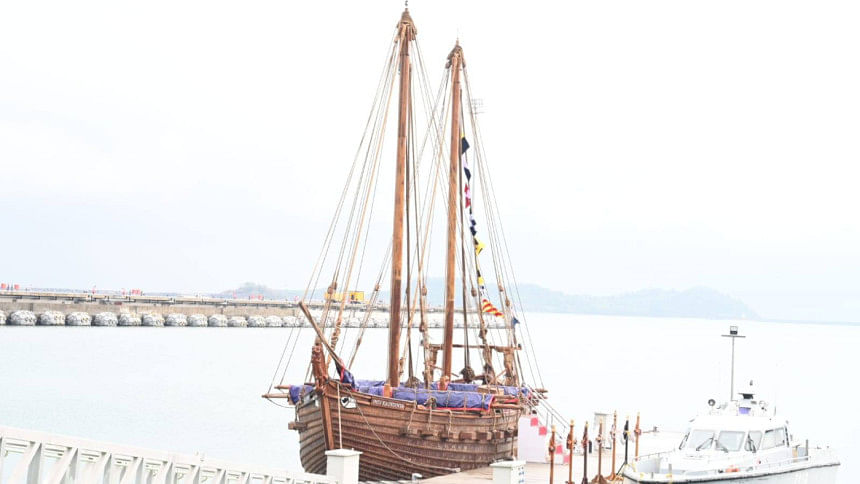Indian Navy reconstructs ancient ship inspired by Ajanta Cave paintings

A 1,600-year-old wooden ship, long extinct and no longer in naval service anywhere in the world, has been successfully reconstructed at the Indian Navy's base in Karwar, in the southern Indian state of Karnataka.
The design was inspired by a painting from the famed Ajanta Caves. Its is a recreation of a 5th-century Christian Era vessel, built entirely using traditional methods and raw materials. The construction was led by master shipwright Babu Sankaran and a team of artisans from Kerala, who executed thousands of hand-stitched joints.
Over several months, the team painstakingly stitched wooden planks on the vessel's hull using coir rope, coconut fibre, and natural resin. The ship was formally inducted into the Indian Navy at the Karwar base yesterday.
The design and reconstruction of the stitched ship -- a joint initiative of India's Ministry of Culture, the Indian Navy, and M/s Hodi Innovations -- posed immense technical challenges, as there were no blueprints or physical remnants of the original vessel available. The design had to be extrapolated from two-dimensional artistic iconography, the defence ministry said.
The Indian Navy oversaw the entire implementation of the project, including concept development, design, technical validation, and construction, in collaboration with M/S Hodi Innovations and traditional artisans.
"The project demanded a unique interdisciplinary approach, combining archaeological interpretation, naval architecture, hydrodynamic testing, and traditional craftsmanship," officials from the defence and culture ministries said.
Unlike modern vessels, the ship is equipped with square sails and steering oars, both of which are alien to present-day ships. The hull geometry, rigging, and sails had to be reimagined and tested from first principles, they added.
The Indian Navy collaborated with the Department of Ocean Engineering at the Indian Institute of Technology, Madras, to conduct model testing and validate the vessel's hydrodynamic behaviour at sea. The navy also conducted in-house structural analysis to assess the wooden mast system, which was designed and constructed without the use of contemporary materials.
Every aspect of the ship had to balance historical authenticity with seaworthiness, leading to design choices that were both innovative and true to the maritime traditions of ancient India, officials said.
"The combination of a stitched hull, square sails, wooden spars, and traditional steering mechanisms makes the vessel unlike any ship currently in naval service anywhere in the world," they added.
Following it induction, the project will enter its second significant phase: the Indian Navy will attempt to sail the vessel along traditional maritime trade routes, reviving the spirit of ancient Indian seafaring. Preparations for the ship's maiden transoceanic voyage from Gujarat to Oman are already underway.

 For all latest news, follow The Daily Star's Google News channel.
For all latest news, follow The Daily Star's Google News channel. 



Comments